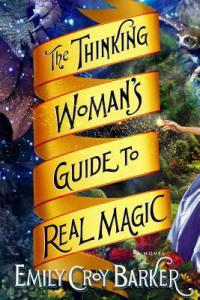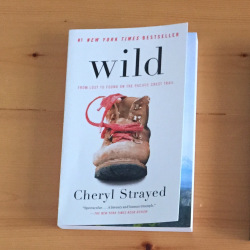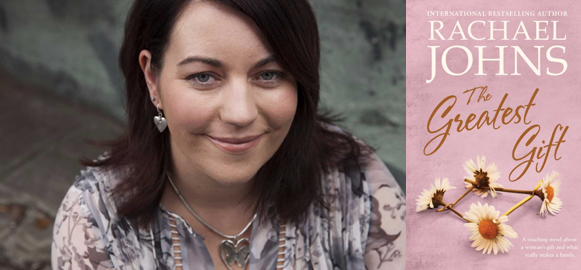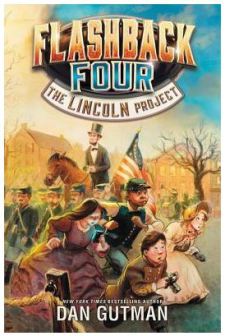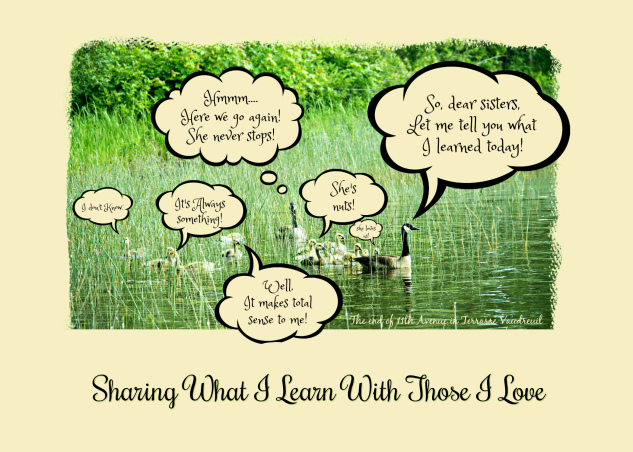Many years ago I had been exposed to this show. We’re talking pre-adolescence here. I had seen the opening theme play on my friend’s TV and I’m still unsure how I felt back then. I didn’t know what to make of it at the time.
Now it’s making its presence felt in my table of favourites and I don’t know what to do because I’m utterly captivated by it. Even among moe and slice-of-life shows, I see Lucky Star as a rarity in anime. A unique gem delicately held and courageously championed by both fans and creators of the show alike. Despite it being episodic in nature, there does seem to be an ongoing continuity with the characters, no matter how minor any possible development may appear, and how it plays out is nothing short of amazing.

Unlike my experience with Haruhi, I actually didn’t feel out of time or touch watching Lucky Star so many years later, after its massive hit during its airtime. Maybe it’s because I didn’t have any built-up expectations for it, or maybe it’s just that good. I believe it’s more the latter, because a lot of what people talk about with Haruhi is the time and culture of otaku fandom during its inception. However, with Lucky Star it is still many years later, a commentary on both Haruhi and the culture of its time. The references remain relevant and even without them the show remains enjoyable, regardless of when you watch it. There is no sense it is locked into a “You had to be there” state to enjoy or understand it. If anything it creates another way to experience and enjoy Haruhi, as much as it does the other way around. In this dynamic, it actually becomes a credit to the show.

One of the wonders of Lucky Star is a core made of a specific kind of love: the kind of love that is for and about otaku culture, but also the kind of love that is for and about friends and family. And its excellent dialogue and narration is delightfully written with such love. It’s a major element in the narrative and feels incredibly palpable on many occasions.
Contrary to what a lot of people might assume about the genre of slice-of-life, that it is an unexciting look at the daily lives of high school students, Lucky Star is actually rather eventful in its own way, and full of interesting (or amusing) conversations. In fact this show actually has discussions around otaku culture and its rather underexplained phenomenon, such as terms like ‘tsundere’ – where the segment Lucky Channel spent its time having one of the characters trying to explain two different types of tsundere, with the more popularized one being of the second variety, resulting in a rant – and ‘moe’ which not even Konata could give a proper answer when asked what it means. If anything, it’s this level of awareness and playfulness of the culture it plays a part in that adds to the shows humour and characters for reasons I’m still trying to work out.
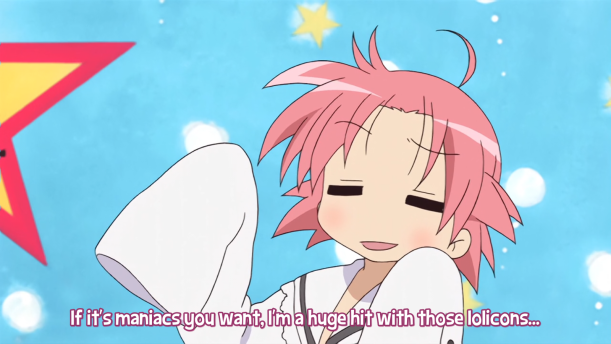
Part of why I enjoyed this show so much is because it remains charmingly accessible to viewers not familiar with its many, many references. Understanding them is not necessary to enjoy the show, but rather bonuses for fans like me, who treat such nods, winks, and wholehearted discussions on such things with tremendous fanboy ecstasy, and makes the whole experience far more enjoyable than anticipated. It gives me delightful fanservice.
There doesn’t seem to be as much discussion about the families and friendships (particularly the casual interactions) as a theme in Lucky Star, as there is a lot of discussion about yuri love; partly due to the blatant subtext in the show. I’m not here to argue for or against it, because the idea is entertaining regardless of how true it actually is. We can speculate on the intended meaning, or we can just create meaning from our own experience of the work. From my reading of the text it seems that this confusion for yuri love is deliberate pandering and nothing beyond tight friendships. I find these friendships awesome and endearing. Yes, it is lighthearted fun, and charmingly comedic in its wealth of idiosyncrasies, but there is also a heart to it that presents quite a few strong themes.
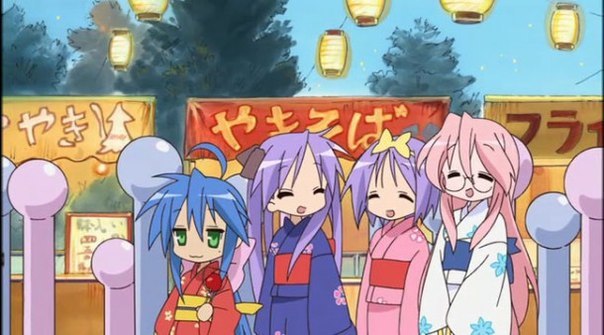
Unsurprisingly, this is perhaps one of the most moe shows ever conceived, and rightfully so. The bright, cute, and colourful aesthetic, wonderful and innocent character designs, and charming and winsome animations all compliment each other perfectly to inspire a very powerful feeling of moe. What you may not expect to feel while watching this is GAR. A feeling on the opposite spectrum of moe. If moe is inspired by ‘cute’ and ‘sweet’ things, then GAR is inspired by ‘manly’ and ‘cool’ things. So imagine my surprise when Anime Tenchou made not one, not two, but several appearances throughout Lucky Star in all its awesome GAR glory. It’s right there and it is quite powerful.

This show eases me in by having the characters talk about seemingly random things. Perhaps even more amazing is how creative it gets with its imagery and ability to convey information visually in really entertaining ways that blend seamlessly with the characters’ personalities and emphasize certain aspects/parts of their day with delightfully unique presentation, like the scene that depicts the two Hiiragi sisters different routines side by side. I find these things a very happy coincidence. The visuals made me happy.

But of course the characters were intriguing. Both relatable and amusing in many ways, with a bit more complexity to them, or a good deal more nuance than other characters of the same genre that provided a layered experience for the viewer in discovering more about them. Would it be so bold of me to wish these characters had also set a good example for female roles? I can easily imagine many people relating to the characters as they are, and hope that level of identification was enough for them to hold onto those parts of them. It’s not my place to ask of this though. I was not there at the time of its airing and height of popularity, but I wonder if this show redefined how the slice-of-life genre was looked upon in how it treated its characters. Whether it did or not, I think these are some of the best characters of all time. Especially Kagami. She doesn’t get enough credit.
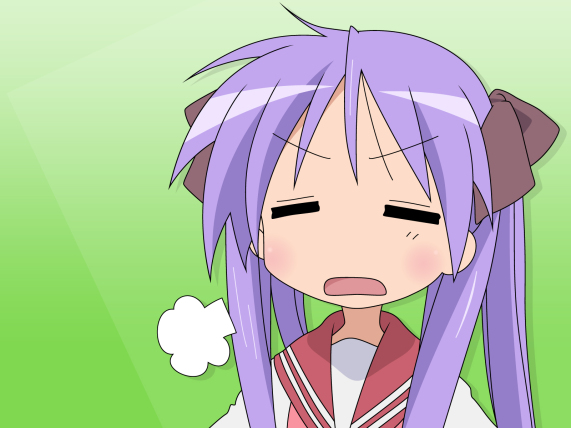
Much yuri fetishization. Played for both the imagined possibilities and the laughs. I’d even go as far as to say that the character of Hiyori Tamura could be a slight avatar for fans wanting to see the girls get their yuri romance on. She is someone who falls into vivid exaggerated imaginations of her friends’ interactions as something more than bashful friendship. Her tendency to not only imagine her friends, Yutaka and Minami in romantic moments, but draw them as well feels like a commentary on romantically obsessed fans. I have no ways of verifying this, but it is amusing to watch and consider nonetheless. Though it does come across as a case of having your cake and eating it too, like “Here’s your yuri, but not really” kind of thing. Either way, IT IS INDULGED.

Lucky Star invites you to have lots of laughs and fun times with friends and anime; combined with the other merits of the show, it becomes a very enjoyable experience overall. And I find it interesting how we can read feelings to be more important than ideas, though Lucky Star is not lacking in that department either, as I only scratched the surface attempting to communicate earlier. However, as much as I would like to consider and present myself as a follower of logic, it’s the shows that affected me the most emotionally, that I hold closest to my heart. I adore this show and its characters and find it all very heartwarming. And it’s one of the most re-watchable things I’ve ever seen. Irrepressibly joyful.
~ Ace
Advertisements Share this: